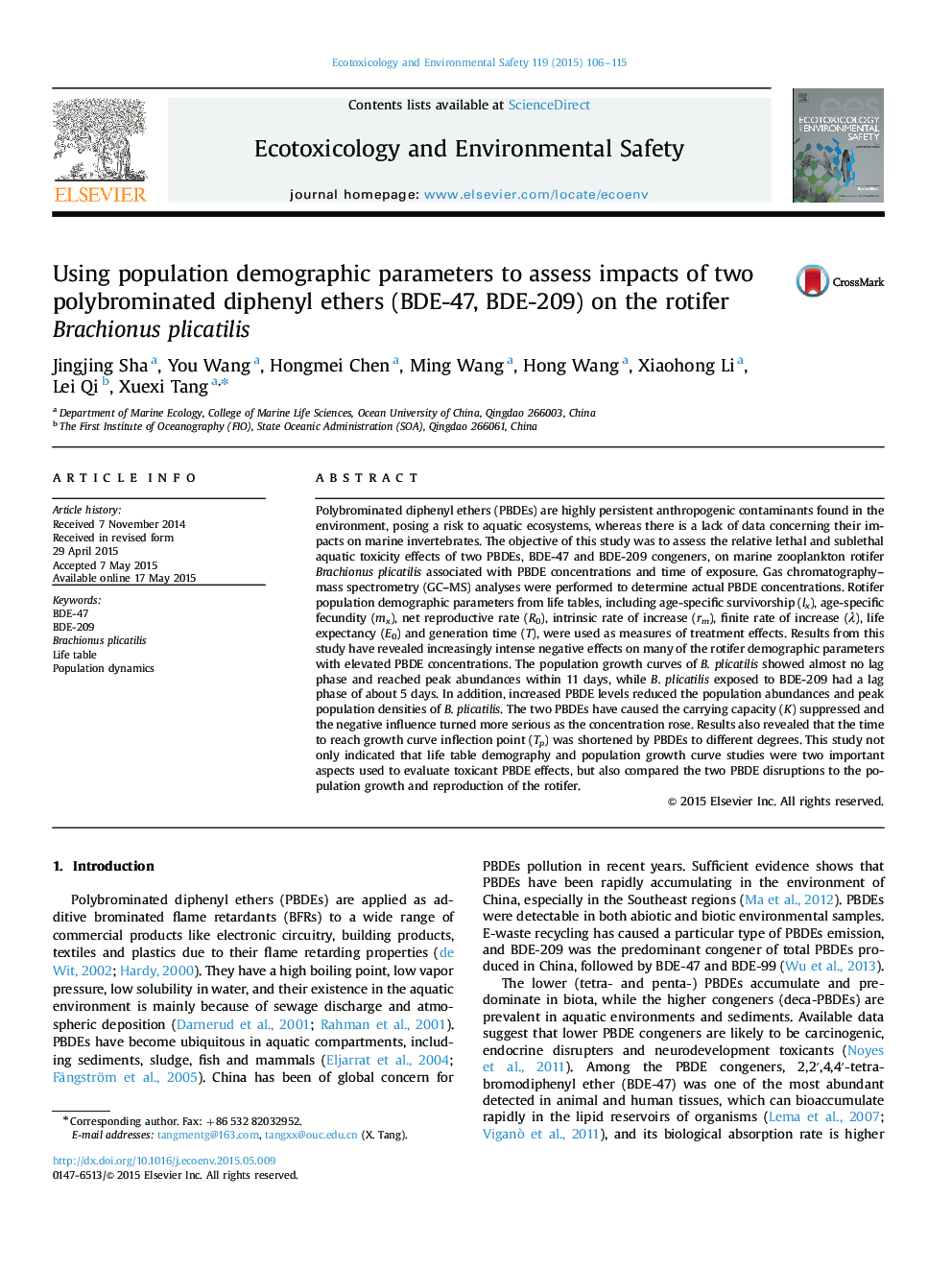| Article ID | Journal | Published Year | Pages | File Type |
|---|---|---|---|---|
| 4419616 | Ecotoxicology and Environmental Safety | 2015 | 10 Pages |
•Rotifer demographic parameters are highly sensitive to BDE-47 and BDE-209.•BDE-209 induces a lag phase of the population growth curves of B. plicatilis.•The two PBDEs reduce the population abundances and peak densities of B. plicatilis.•The two PBDEs cause the carrying capacity suppressed.•The time to reach growth curve inflection point can be shortened by the two PBDEs.
Polybrominated diphenyl ethers (PBDEs) are highly persistent anthropogenic contaminants found in the environment, posing a risk to aquatic ecosystems, whereas there is a lack of data concerning their impacts on marine invertebrates. The objective of this study was to assess the relative lethal and sublethal aquatic toxicity effects of two PBDEs, BDE-47 and BDE-209 congeners, on marine zooplankton rotifer Brachionus plicatilis associated with PBDE concentrations and time of exposure. Gas chromatography–mass spectrometry (GC–MS) analyses were performed to determine actual PBDE concentrations. Rotifer population demographic parameters from life tables, including age-specific survivorship (lx), age-specific fecundity (mx), net reproductive rate (R0), intrinsic rate of increase (rm), finite rate of increase (λ), life expectancy (E0) and generation time (T), were used as measures of treatment effects. Results from this study have revealed increasingly intense negative effects on many of the rotifer demographic parameters with elevated PBDE concentrations. The population growth curves of B. plicatilis showed almost no lag phase and reached peak abundances within 11 days, while B. plicatilis exposed to BDE-209 had a lag phase of about 5 days. In addition, increased PBDE levels reduced the population abundances and peak population densities of B. plicatilis. The two PBDEs have caused the carrying capacity (K) suppressed and the negative influence turned more serious as the concentration rose. Results also revealed that the time to reach growth curve inflection point (Tp) was shortened by PBDEs to different degrees. This study not only indicated that life table demography and population growth curve studies were two important aspects used to evaluate toxicant PBDE effects, but also compared the two PBDE disruptions to the population growth and reproduction of the rotifer.
